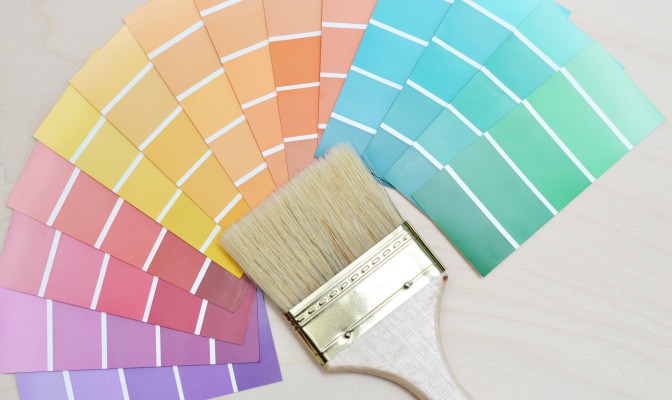When it gets down to it, your work should reflect your clients’ style and taste. As a professional, though, it’s also your job to design living spaces that are elegant, striking, and welcoming. So what happens when you’re working with design clients who are afraid of any color that might be too “bold”? How do you help them transform a bleached-out home into something beautiful?


Work your way up
If your client won’t budge on bigger spaces like living rooms, dining rooms, or bedrooms, try starting small. Your client may be more willing to step out of their comfort zone when it comes to spaces like bathrooms that may feel “low-stakes.” Once they realize it’s possible to use color without creating a bright, garish mess, they may be a little more willing to branch out in other rooms as well.Color for contrast
For clients set on a neutral palette, suggest adding hints of color to bring an otherwise bland room to life. Using color in small amounts will be an incredible improvement to a room’s character, but it won’t be bright enough to scare off your color-timid client. Accent colors don’t need to be too vibrant, either—consider a contrasting neutral hue to set off your main colors.Accessorize
Painting with color or buying colored furniture may seem a little too “permanent” for a client intimidated by color. Instead, try bringing color into the room with bright accessories. Pillows, lampshades, throw blankets, or pieces of art are all good bets for offsetting a neutral room. Many people aren’t actually afraid of color, but of choosing the wrong color. Because accessories are so easy to switch out, they’re the perfect way for your clients to experiment.
Create an accent wall
If you’re working with a client who’s looking for some color but balks at the thought of painting a whole room, suggest creating an accent wall. For a more subtle contrast, pick a deeper version of the color used to paint the rest of the walls in the room; it might not be bright, but it can still help to disrupt the potential monotony of a room done entirely in the same color. For a bolder client, try a bolder color. A bright accent wall lets you use a deep, vibrant color without overpowering the rest of the room. Use accents and accessories in a similar shade to spread color throughout the room. With the right palette, an accent wall will fit into a room so naturally clients will hardly remember their concerns.

I too was afraid of color ( “color-phobe “). I am a faithful supporter of HGTV and I always appreciated the way the Interior Designers would confidently display color so when I moved into my own house I started experimenting with “pops” of color ex: lime green, egg plant purple and yellow throw pillows on a chocolate covered sofa. It’s prettier than it sounds. It has given my family room an immediate face lift.
I have decided as time goes on I will eventually do an accent wall of color in my master bedroom.